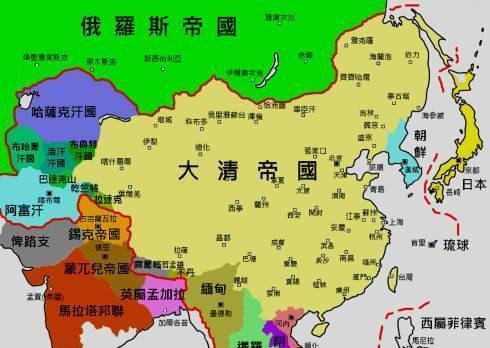China's Xinjiang was called the Western Regions in ancient times, and during the Western Han Dynasty, after defeating the Xiongnu, the Western Regions Were Set Up, and from then on, this vast area was included in the territory of the Han Dynasty. For more than a thousand years, the Western Regions were divided and merged with the Central Plains Dynasty. Whenever the Central Plains Dynasty was strong, it was able to manage this area well. However, in the face of the decline of the Central Plains Dynasty, the ethnic minorities in the western region took the opportunity to establish a divided regime.

The real area of Xinjiang was effectively managed and developed, and firmly controlled within the territory of our country, which was a matter of the Qianlong period of the Qing Dynasty. At the beginning of the Qing Dynasty, the Erut Mongols established the Dzungar regime in the Ili region, and for a time they were extremely strong, and they fought many wars with the Qing Dynasty. Ten years after Qianlong, when infighting broke out in the Dzungar regime, Qianlong seized the favorable opportunity and sent troops to Xinjiang to quell the turmoil in one fell swoop and unify Xinjiang. In order to effectively manage this territory, General Yili was set up to oversee the military and political affairs of the north and south roads of the Tianshan Mountains in Xinjiang.
Because the Qing army was in the process of counterinsurgency, the smallpox in the northern part of the Tianshan Mountains was rampant, resulting in a sharp decline in the local population and a situation of no one for thousands of miles. Wei Yuan, a scholar of the Qing Dynasty, said, "Of the 100,000 households counted, four out of ten people died of pox, three out of ten followed by those who sneaked into Russia and Kazakhstan, and three out of ten who led the annihilation of the soldiers... In addition, for thousands of miles, there is no wa la a felt tent. In order to consolidate national defense, develop Xinjiang, and solve the problem of sparse population, Qianlong formulated the general guiding ideology of "migrants under the actual stuffing."
In addition to the troops stationed there, Qianlong ordered that some criminals who committed crimes but did not die were all distributed to Xinjiang, including soldiers captured in the peasant uprising, officials who were exiled for committing crimes, and literati and inkers who were punished for literary prisons. Wait, during the Qianlong period, the famous scholar Ji Xiaolan was sent to Xinjiang by Qianlong and ate the wind and sand for several years.
In response to the dispatch of prisoners to Xinjiang, Qianlong explained that these criminals are all people who are full of evil and should have been executed, and now being assigned to Xinjiang to cultivate land is equivalent to giving them a way to live, neither working for the people nor harming their wealth. He particularly stressed that this move not only solves the food problem for the defending troops, but also solves the disadvantages of poor land and too many people in the interior.
After years of migration, soon there were more than a hundred thousand people, but women were scarce, almost the same men in the world. Without women, there is no way to reproduce, without women, the energy of the people on the side has nowhere to be placed, and hundreds of thousands of men together are prone to chaos, or riots, or escape.
In order to solve the dilemma of more men and fewer women, the government sent women to Xinjiang to breed the population, including the wives and daughters of soldiers who were captured after the failure of the peasant uprising, the women who fled the famine in the disaster areas, and the criminal women. It not only solves the trouble of more men and fewer women, but also ensures the reproduction of the population. By the guangxu period at the end of the Qing Dynasty, the population had increased by more than tenfold in a hundred years.
From today's point of view, although these measures of Qianlong were based on the purpose of safeguarding the rule of the Qing Dynasty, Xinjiang has been further developed, and its relations with the interior have become closer, which is conducive to safeguarding the unity and integrity of the motherland's territory.